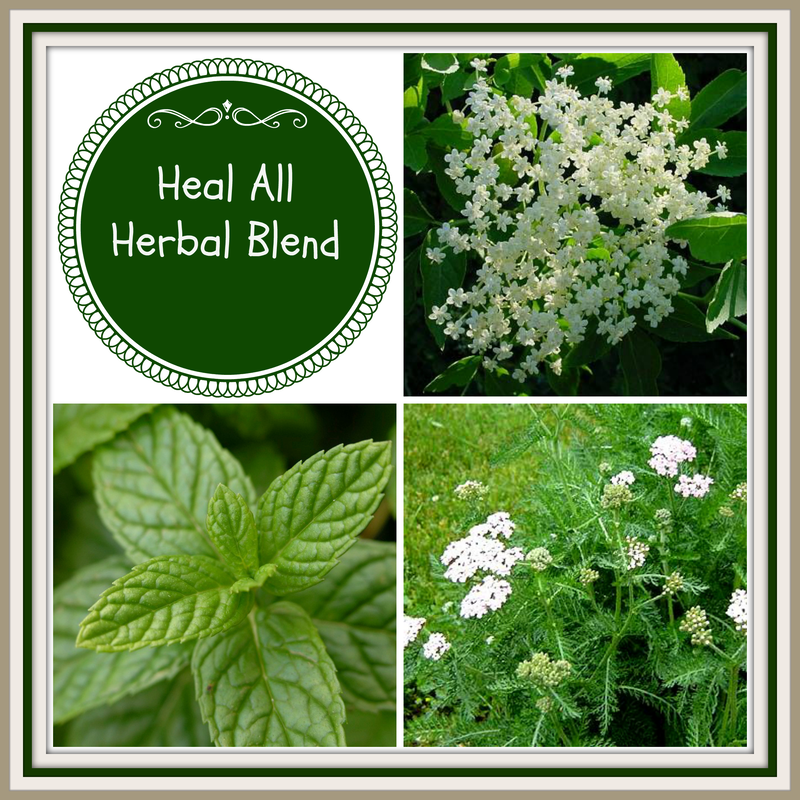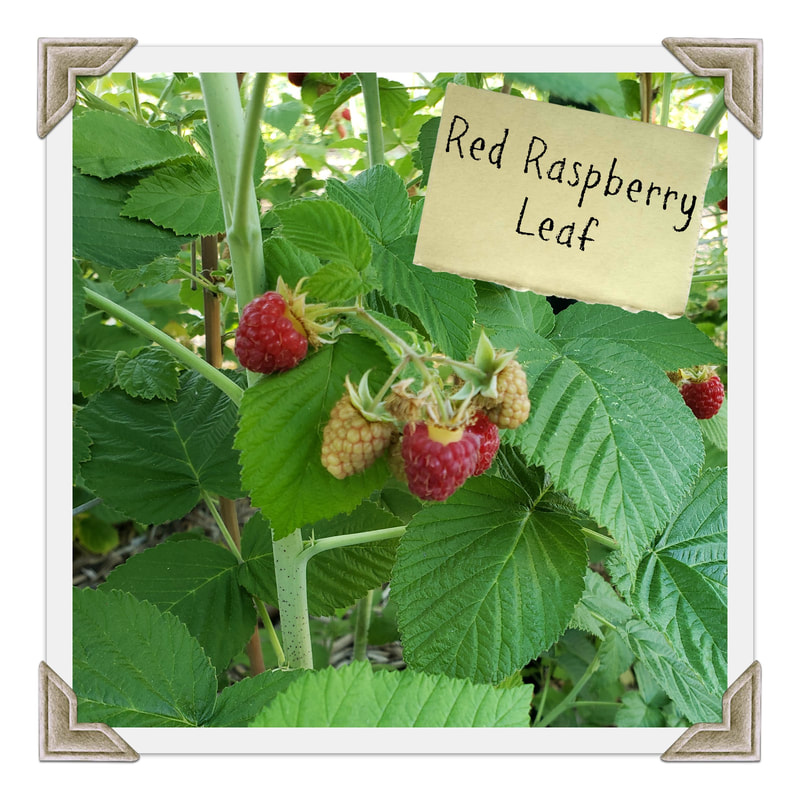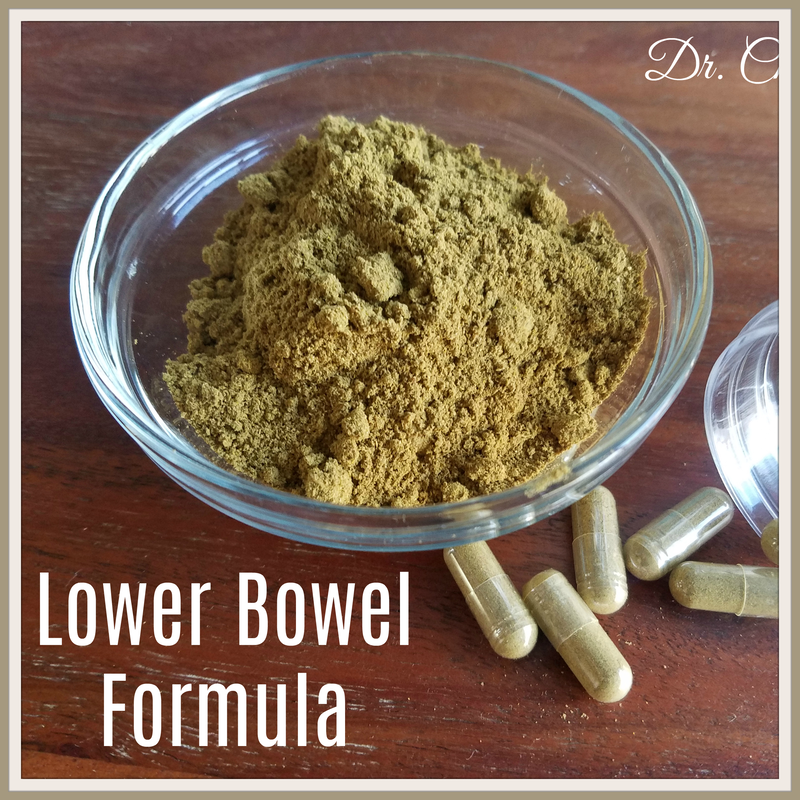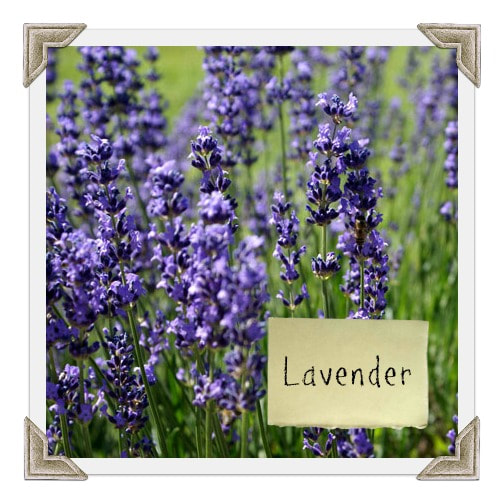For the next couple of lessons I would like to go through the different “rooms" in our body home that we have been building. I feel it is important to understand the way our body systems work so we can know how to build and strengthen those areas, as well as help in determining a possible root cause of a condition and how to aid the body in healing – if that be the Lord’s will.
The digestive system is the next place to focus on healing, cleaning, strengthening and building because this is the place for eliminating toxins from the body. If this system is not properly eliminating, a myriad of complications in the body can manifest in all kinds of symptoms and mystery illness.
The purpose of the digestive system is to take in food for the assimilation of nutrients so the body has fuel and building blocks with which to function, and then remove all the waste. The digestive tract, which goes from the mouth to the anus is lined with epidermis which protects the body from pathogens (harmful viruses, bacterial and other “invaders”). The digestive system can be broken down into the follow parts:
The digestive system is the next place to focus on healing, cleaning, strengthening and building because this is the place for eliminating toxins from the body. If this system is not properly eliminating, a myriad of complications in the body can manifest in all kinds of symptoms and mystery illness.
The purpose of the digestive system is to take in food for the assimilation of nutrients so the body has fuel and building blocks with which to function, and then remove all the waste. The digestive tract, which goes from the mouth to the anus is lined with epidermis which protects the body from pathogens (harmful viruses, bacterial and other “invaders”). The digestive system can be broken down into the follow parts:
- Ingestion (mouth, pharynx, esophagus)
- Digestion (stomach)
- Absorption (small intestine)
- Elimination (large intestine, rectum, anus)
Ingestion - The Mouth
There is a lot going on in the mouth. It is the first line of defense in the immune system, where the saliva can kill off certain pathogens. The saliva also starts the digestive processes of breaking down food and lubrication for passage down the esophagus. The tongue contains taste buds which are the pleasure center for tasting our food, remember how the Lord wants us to enjoy the creations he has blessed us with.
“It was pointed out to him (Adam), as it has been pointed out to you, that there are many good fruits to be plucked, to be eaten, to be enjoyed. We believe in enjoying good food. We think that these good things are given us of God. We believe in getting all the enjoyment out of eating that we can; and, therefore, we should avoid gluttony, and we should avoid all extremes in all our habits of eating.” Jesus the Christ by James E. Talmage, chapter 3.
These "tastes" send messages to stimulate or support other body systems depending on the specific taste: salty, sour, bitter, sweet, and savory.
Conditions in the Mouth
Canker/Mouth Sores: Also known as mouth ulcers that are formed because of inflammation - not infection. They can appear anywhere in the mouth: tongue, lips, cheeks, gums, etc. Canker sores are small, white swellings that are painful and can also burn or tingle. They last anywhere from four to twenty days and can be triggered by a number of reasons including, dental work, accidental biting or injury, stress, fatigue, hormone imbalance, allergies, viral infection or abnormal immune response. The most common causes are stress and allergies. The best prevention would be to have a clean diet (Lesson 1) and a healthy gut (Lesson 2).
Cold Sores: Cold sores are a viral infection caused by the herpes simplex virus 1 that resides in nerve endings. Many people harbor this virus but it only "surfaces" when over stressed, immune system compromised, overexposure to the sun and wind and for women, menstruation. It manifests as a tingling in the affected area which can swell to painful blisters that can cluster around the mouth and lips and even on the nose. The blister will ooze and crack and eventually crust over. They can last anywhere from four days to three weeks. The best prevention for a cold sore outbreak is to keep the body in a healthy condition by eating nutritious food (Lesson 1) and building the immune system (Lesson 5).
Tooth and Gum Care:
- Keep teeth clean by brushing and flossing every day.
- Swish mouth with water every time you eat something or drink something that is not water.
- Stay away from sugar and processed foods and consume a whole foods diet (Lesson 1).
- Thieves essential oil – brush teeth, swish with it in water, place directly on area of concern.
- Dr. Christopher’s Herbal Calcium formula – take every morning.
- If there is a cavity or tooth ache and you cannot get dental care, pack the tooth with tooth powder regularly until you can get help.
- Comfrey – chew up and place between lip and gum.
- Gum formula; 50% slippery elm, 25% white oak powder, 25% comfrey – make a paste and apply to gums or use tooth powder.
- Dr. Christopher’s X-ceptic formula, swish around teeth 3-4 minutes after teeth have been brushed and flossed.
- Tooth powder
- Essential oils: Thieves, clove, Purificaton (Young Living blend)
- Herbs: Tarragon (chew on leaf for temporary numbing), spilanthes (numbing), Tooth powder.
Ingestion - Esophagus
After the mouth does its job of starting the food break down process it moves through the esophagus and on to the stomach. The esophagus is lined with mucus which can trap pathogens for removal.
Conditions in the Esophagus
Heartburn often occurs when hydrochloric acid, which is used by the stomach to digest food, backs up into the esophagus, causing sensitive tissues to become irritated. Causes include obesity, overeating, gallbladder problems, stress, allergies, enzyme deficiencies, emotional issues, pharmaceutical side effects and hiatal hernia to name a few. Food triggers include but are not limited to alcohol, caffeine, chocolate, citrus fruits and products, fats and fatty or fried foods, spicy foods, tomato-based foods, processed food, sugar, rich foods such as cheese, and desserts.
Some prevention measures include chewing food well and slowly, don’t eat three hours before bedtime and do not overeat. If overweight, weight loss may be all that is needed to remove symptoms. Avoid trigger foods.
Some prevention measures include chewing food well and slowly, don’t eat three hours before bedtime and do not overeat. If overweight, weight loss may be all that is needed to remove symptoms. Avoid trigger foods.
- Papaya, including papaya seeds.
- Raw vegetables – include more into the diet.
- Cabbage juice and salad greens.
- Fresh squeezed lemon added to a glass of water.
- Aloe vera juice
- Catnip
- Fennel seed – (avoid when pregnant).
- Ginger
- Cardamom – eliminates gas.
- Dill – soothe digestive tract (avoid if pregnant).
- Dandelion leaf
Digestion - Stomach
The stomach is where the actual digestion takes place. Mucus lines the stomach to protect it from the acid. This acid helps break down the food even more and kills pathogens that got past the first few lines of immune defense (Lesson 5).
Conditions in the Stomach
Nausea/Upset Tummy can be a symptom of pregnancy, anxiety, motion sickness, side effect of drugs, eating fatty meals, food poisoning, harmful bacteria, etc.
Essential oils, massage into abdomen with a carrier oil, or better yet, an herbal oil:
- Peppermint
- Ginger
- Lavender
- Digestive blend from company of choice (Butterfly Express is Inside Out, Young Living is Digize)
Ulcers: Ulcers are raw sores in the upper gastrointestinal tract that can have many causes including excess stomach acid, smoking, alcohol, coffee, stress, certain drugs like aspirin and anti-inflammatories, heredity, food allergies, and lack of certain nutrients from poor eating habits. Symptoms include chronic pain in the stomach that feels deep, burning, aching, and gnawing. Pain may ease right after eating but comes right back and increases when stressed or after drinking coffee or alcohol. Other symptoms include blood in the stool, recurrent upper abdominal pain, nausea, vomiting (sometimes with blood), loss of energy, lower back pain, headaches, choking sensation, and itching.
Striving to deal with and avoid stress where possible and having good nutrition and gut health can prevent ulcers from forming.
Striving to deal with and avoid stress where possible and having good nutrition and gut health can prevent ulcers from forming.
- Blackstrap molasses
- Avoid sugar, processed food, fried food, black tea, coffee, chocolate, animal fats, carbonated drink, alcohol, and any trigger foods.
- Incorporate stress relieving techniques (Lesson 9).
- Foods, bananas, dark green leafy vegetables, red pepper, pineapple, blueberries, cabbage, cultured foods, garlic, ginger.
- Eating frequent, small meals of softer foods can ease the pain.
- Fresh cabbage juice, two or three times a day. Drink immediately after juicing.
- Gut Healer Herbal Blend
- Dr. Christopher's Soothing Digestion formula
The Gut
We have talked a lot about gut health and here we are at the body system that is considered “the gut”. The gut consists of the small and large intestines, as well as the majority of the friendly bacteria we discussed in Lesson 2. 75% of the immune system resides here, mostly in the small intestine. This area is considered the microbiome. These are some of the jobs these bacteria do in exchange for food and a home:
- Help the body metabolize foods.
- Feed the cells of the intestinal walls.
- Make vitamins B and K.
- Help maintain the mucus coating of the intestinal lining.
- Compete for living space with pathogenic bacteria, which inhibits their growth.
- Prevent infection - they are the security guards of the body.
Absorption - Small Intestine
The largest collection of lymph tissue, which is part of the immune system is in the small intestine, where all the nutrients from our food is absorbed into the body through the lymph and blood.
Elimination - Large Intestine
As food moves out of the small intestine and into the large, it continues to absorb electrolytes and water to form a solid piece of waste called feces, which is then excreted through the anus. The waste consists mainly of food residue, dead cells, dead bacteria and viruses and inorganic substances. This is also the place where most of the friendly bacteria in our body live.
Conditions in the Colon
Diarrhea is an increase in the volume of wateriness of stool or increase in frequency of bowel movements. Symptoms include cramping, vomiting and gas. Main causes are food poisoning or pathogenic virus or bacteria. Can also be from a chronic condition such as food sensitivities, anxiety, inflammatory bowel issues, or irregular eating habits.
- #1 rule is to stay hydrated and consume a lot of electrolytes while the body is working on the problem. Consume mostly liquids as food intake. Cucumbers, watermelon, and coconut water all have a good supply of electrolytes.
- Consume cultured food or take probiotics.
- Herbs are best taken as a tea to help with hydration.
Constipation is infrequent or irregular bowel movements, with difficulty, discomfort, and sometimes pain on passing dry, hard feces. Regular bowel movements are important for removing toxins from the body and can affect all areas of our body and health. It is estimated that 90% of all diseases and imbalance in the body stem from a clogged or unclean intestinal tract. The number of healthy bowel movements will be different from person to person because of how unique we all are. Some people go three times a day, after each meal, and if it goes down to once a day, they are constipated. Still another may have a daily BM and another, every other day. It is important to discover what your “regular” is so you can be aware if you need to do some work in getting the bowels moving and those toxins out. Main causes of constipation are poor diet (processed, refined foods and fried foods) and stress. Others can be a lack of exercise, not drinking enough water, eating too much meat or dairy, not eating enough fiber, withholding the urge to go, pharmaceutical and antibiotic use and abuse of laxatives.
Symptoms of constipation can range all over the place since this is a toxic build up condition in the body which can manifest as all kinds of disease. The most common signs of toxic build up and blockage are pain in the abdominal area (this can be real intense), difficulty passing stools, infrequent passing of stools, or diarrhea, strong body odor, bad breath, and strong smelling gas, coated tongue (toxins trying to be released from the body), headache, fatigue and indigestion.
Symptoms of constipation can range all over the place since this is a toxic build up condition in the body which can manifest as all kinds of disease. The most common signs of toxic build up and blockage are pain in the abdominal area (this can be real intense), difficulty passing stools, infrequent passing of stools, or diarrhea, strong body odor, bad breath, and strong smelling gas, coated tongue (toxins trying to be released from the body), headache, fatigue and indigestion.
- Fiber Flush (The Prime): 1 teaspoon each of ground flaxseed and psyllium seed powder, stir together and add some water then drink quickly before the psyllium powder turns gelatinous. Take this as often as you feel but always every night before bed and with a glass of water afterward.
- Abdomen Massage: Use any of the essential oils in the Constipation Remedies box below, alone, in combination or one of the DIY blends. Drop 3-5 drops of essential oil into a teaspoon of carrier oil or herbal infused oil and begin at the bottom left side of the abdomen and massage in a circular, clockwise motion.
- Heating Pad: Just having heat on the abdomen can bring relief of pain and aid the body in moving the bowel. I like to apply the heat right after the abdomen massage.
- Healing foods: Fresh, ripe fruit of all varieties, papaya fruit or enzyme tablets, unsulphered dried fruit, especially prunes and figs, raw fibrous vegetables, green leafy vegetables, whole grains, cultured foods rich in probiotics.
- Triphala, an Indian formula used in Ayurveda.
- Natural Calm magnesium supplement
- Raspberry leaf and alfalfa aid in detoxifying the body.
- Warm chamomile tea with raw honey is soothing and pain relieving.
- Cumin seed, coriander seed, fennel seed in equal parts, make as a decoction.
- Teas using the following herbs, alone or in combination: fennel seed, dill seed, catnip, any of the mints, ginger, and chamomile.
Digestive Support and Lifestyle for a Healthy System
- Eat in a pleasant setting that is unhurried and chew food thoroughly before swallowing.
- Eat whole foods (Lesson 1).
- Incorporate cultured foods to feed and build gut flora. (Lesson 2)
- Avoid eating while stressed, working or in pain.
- Consume fluids between meals, not during.
- Do not overeat or eat too frequently, the system needs a rest.
- Light movement, like walking, aids digestions after meals.
- Exercise regularly. Twisting yoga postures are great for digestion.
Herbs for Digestive Health
Carminative herbs are aromatics that ease digestion, soothe intestinal walls, ease cramping, reduce inflammation and help expel gas. These can be used as daily tonics in food and beverages or tincture or capsules.
Bitter herbs send a message to prepare the body for digestion, increase digestibility of food, and calm the nervous system (for emotional health). They should be taken 15-20 minutes before eating.
- Angelica
- Barberry root
- Burdock root
- Motherwort
- Hyssop
- Mugwort
- Orange peel
- Oregon grape root
- Yellow dock root
How to Prepare Herbs Project
References
Memmler's The Human Body in Health and Disease
Prescription for Nutritional Healing
Herbal Recipes for Vibrant Health
Herbal Home Health Care
The Illustrated Encyclopedia of Healing Remedies
Reference Guide for Essential Oils
The Herbal Academy Intermediate Course
Prescription for Nutritional Healing
Herbal Recipes for Vibrant Health
Herbal Home Health Care
The Illustrated Encyclopedia of Healing Remedies
Reference Guide for Essential Oils
The Herbal Academy Intermediate Course
Disclaimer: The Information contained on this blog is for educational purposes only and as a guideline for your personal use. It is not intended to diagnose, treat, prescribe or replace the advice of a licensed healthcare professional. Those who follow these suggestions do so at their own risk.










































